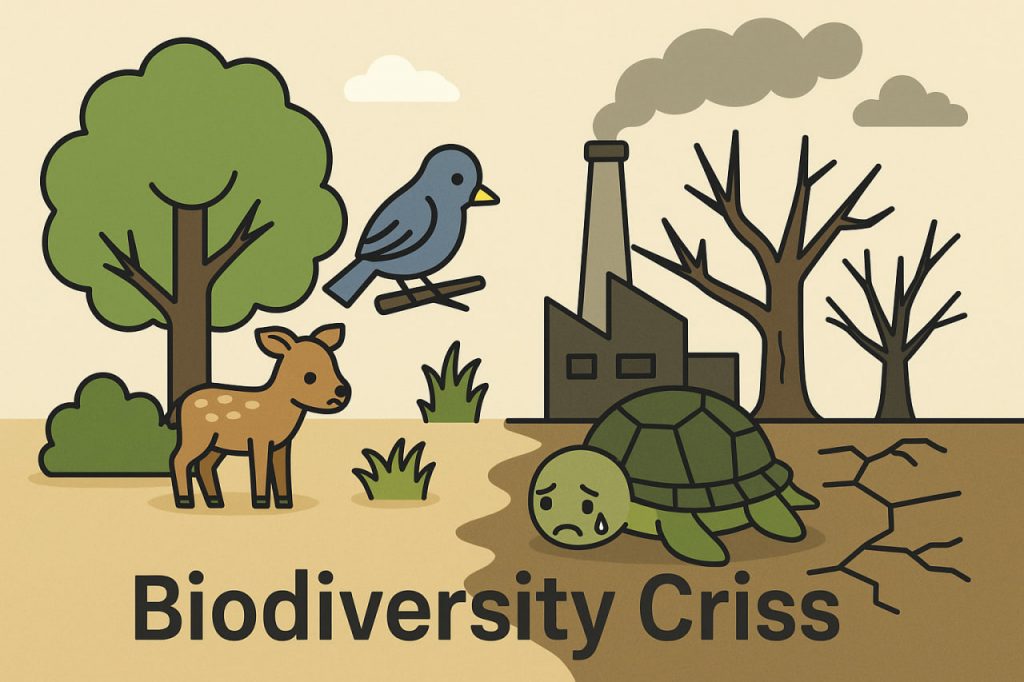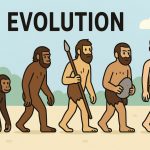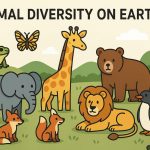The biodiversity crisis refers to the rapid decline in the variety of species, ecosystems, and genetic diversity on Earth, primarily caused by human activities. Scientists estimate that extinction rates today are 100 to 1,000 times higher than natural background levels. This loss affects not only rare and exotic species but also everyday ecosystems that humans depend on for food, clean water, and climate stability.
Main Causes of the Crisis
The crisis is driven by multiple interconnected factors. Habitat destruction through deforestation, urbanization, and agriculture eliminates homes for countless species. Pollution, including plastics and chemicals, poisons ecosystems. Overexploitation, such as overfishing and hunting, reduces populations beyond recovery. Climate change shifts habitats and disrupts migration and reproduction patterns. Together, these forces create unprecedented pressure on global biodiversity.
Consequences for Ecosystems
The decline of biodiversity destabilizes ecosystems. Pollinators such as bees are disappearing, threatening global food security. Coral reef die-offs reduce marine biodiversity and fisheries. The loss of predators leads to overpopulation of prey species, upsetting natural balances. When ecosystems collapse, humans face increased risks of famine, disease, and natural disasters.
Biodiversity and Human Well-Being
Humans rely on biodiversity for essential resources and services. Medicines are often derived from plants and animals, while forests and wetlands regulate air and water quality. Diverse ecosystems provide resilience against shocks, such as droughts or disease outbreaks. The biodiversity crisis directly threatens human health, economies, and cultures worldwide.
Conservation and Solutions
Efforts to combat the biodiversity crisis include creating protected areas, restoring ecosystems, and reducing resource exploitation. International agreements such as the Convention on Biological Diversity set global targets, while local initiatives focus on reforestation, sustainable fishing, and pollution reduction. Public awareness and individual actions—such as reducing waste, supporting eco-friendly products, and protecting habitats—are also critical.
The Role of Science and Technology
Modern science helps monitor and address the crisis. Satellites track deforestation, drones survey endangered species, and genetic tools assess population diversity. Artificial intelligence aids in analyzing global data and predicting ecosystem changes. These technologies, combined with political will and community action, offer hope for reversing biodiversity loss.
Conclusion
The biodiversity crisis is one of the greatest challenges of our time. It threatens not only wildlife but also human survival and well-being. By addressing its root causes and investing in conservation, humanity can slow or even reverse this decline. Protecting biodiversity means safeguarding the stability of life on Earth for present and future generations.
Only united humanity can overcome all the challenges of modern civilization. If we do not do this, humanity will perish.
Glossary
- Biodiversity – the variety of species, ecosystems, and genetic forms of life.
- Habitat destruction – loss of natural environments due to human activity.
- Overexploitation – excessive use of natural resources leading to decline.
- Ecosystem collapse – breakdown of natural systems supporting life.
- Convention on Biological Diversity – international treaty for protecting biodiversity.
- Conservation – protection and sustainable management of natural resources.


